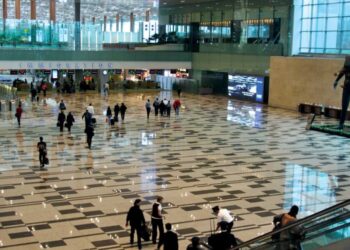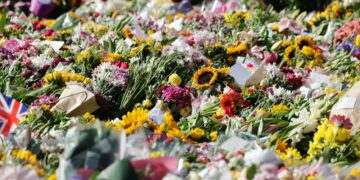The Berlin wall, an iconic symbol of the Cold War, stood for nearly 30 years as a physical manifestation of the division between the Communist East and the Capitalist West. Constructed in 1961, it served as a barrier not only between two ideologically opposed political systems but also between families, friends, and communities torn apart by the geopolitical tensions of the era. As a result, the wall became a powerful emblem of repression, illustrating the lengths to which the East German government would go to prevent its citizens from seeking freedom and opportunity in the West.
Background: Post-world war II and the division of Germany
The origins of the Berlin Wall are deeply rooted in the aftermath of World War II. After the fall of Nazi Germany in 1945, the country was divided into four zones, controlled by the Allied powers: the United States, the Soviet Union, Great Britain, and France. Berlin, the capital, despite being located entirely within the Soviet zone (which later became East Germany), was similarly divided into four sectors. The Western Allies (U.S., Britain, and France) controlled West Berlin, while the Soviet Union controlled East Berlin.
The ideological divide between the Communist East and the Capitalist West deepened as tensions escalated between the two superpowers: the Soviet Union and the United States. As the Cold War intensified, the Eastern Bloc, under Soviet influence, sought to solidify its socialist system, while the West promoted democratic governance and free-market economies.
The ideological, political, and economic differences between East and West Germany became particularly stark. East Germany (the German Democratic Republic or GDR) was under a Soviet-style communist regime, while West Germany (the Federal Republic of Germany or FRG) adopted a capitalist, democratic system with significant backing from the West, particularly the United States.
The Berlin crisis and the build-up to the wall
By the 1950s, it became evident that the two Germanys were moving in very different directions. East Germany faced significant economic difficulties and political repression under the leadership of Walter Ulbricht and the Socialist Unity Party. Conversely, West Germany was experiencing an economic boom, thanks to the Marshall Plan, and was seen as a beacon of freedom compared to the repressive East.
This divergence in quality of life led to a mass exodus of East Germans, particularly the young and skilled, who were fleeing to the West through the open Berlin border. By the late 1950s, more than 2.5 million East Germans had defected to the West. The loss of so many people, particularly professionals and educated individuals, threatened the viability of the East German economy.
In response to this crisis, the Soviet Union, under Premier Nikita Khrushchev, sought to pressure the West to withdraw from Berlin. In 1958, Khrushchev issued an ultimatum demanding that Western forces leave Berlin, threatening to hand control of all access to the city over to East Germany, which would effectively isolate West Berlin. However, the Western powers refused to yield to these demands.
By the early 1960s, the situation had reached a breaking point. East Germany was losing around 1,000 citizens a day through the Berlin border, primarily via West Berlin. The GDR could not afford to lose more of its population. On the night of August 12, 1961, East German leader Walter Ulbricht, with the backing of the Soviet Union, made the decision to seal off West Berlin. Construction of the Berlin Wall began in the early hours of August 13, 1961.
The construction and structure of the wall
At first, the Berlin Wall was not the massive concrete structure it would later become. The initial barrier was a barbed wire fence erected overnight by East German soldiers and construction workers. However, this rudimentary barrier was quickly upgraded to a more permanent and imposing structure. The Berlin Wall as it eventually came to be known consisted of two parallel concrete walls, separated by what was ominously referred to as the “death strip.”
- The outer wall: The wall that faced West Berlin was about 12 feet high and constructed from concrete slabs. This wall was reinforced with smooth pipes on top to make climbing nearly impossible.
- The death strip: Between the two walls lay a wide, open area filled with sand or gravel, which made footprints easily detectable. This space was heavily guarded by armed East German border guards (Grenztruppen), who were authorized to shoot anyone attempting to escape. The death strip was also outfitted with watchtowers, searchlights, and anti-vehicle trenches. Dogs were often used for patrols, and electronic sensors were installed to detect any breaches. The area was further fortified with anti-personnel obstacles, including metal spikes and trip wires.
- The inner wall: The inner wall, which faced East Berlin, was also reinforced and monitored. It served as the second line of defense against potential defectors, making escape from the East extraordinarily difficult.
In addition to the physical structure, the East German government deployed an extensive system of surveillance and intelligence-gathering through the Ministry for State Security, or the Stasi. This organization employed informants and conducted surveillance on East German citizens to detect any signs of dissent or plans to escape.
How the Berlin wall worked: A system of control
The Berlin Wall functioned as both a physical barrier and a psychological weapon. Its purpose was not only to prevent East Germans from fleeing to the West but also to symbolize the power of the Communist regime. The mechanisms by which the wall operated included:
- Border control and checkpoints: While the wall was impenetrable for most, there were several heavily guarded crossing points where passage was allowed under specific conditions. The most famous of these was Checkpoint Charlie, which was used primarily by diplomats and military personnel. Civilians were rarely allowed to pass between East and West, and those who were given permission underwent strict scrutiny and interrogation.
- Shoot-to-kill orders: One of the most chilling aspects of the Berlin Wall was the shoot-to-kill policy enforced by East German border guards. These orders, known as “Schießbefehl”, were designed to deter would-be escapees. Guards were instructed to shoot without warning at anyone attempting to breach the wall. Over the years, hundreds of people were killed while trying to escape, though the exact number remains uncertain. Some estimates suggest that at least 140 people died at the Berlin Wall, though many believe the actual number could be higher.
- Surveillance and informants: The Stasi, East Germany’s secret police, played a key role in ensuring that citizens adhered to the regime’s strictures. Through a vast network of informants, the Stasi monitored the activities of ordinary citizens, looking for any signs of dissent or escape planning. Families, friends, and colleagues were encouraged to report on each other, creating a culture of fear and mistrust within East Germany.
- Propaganda: The East German government portrayed the Berlin Wall not as a prison but as a “protective barrier” (Antifaschistischer Schutzwall) that kept out Western fascists and spies. The regime argued that the wall was necessary to safeguard the socialist state from external enemies. State-controlled media perpetuated this narrative, although most East Germans were well aware that the wall was designed to keep them in, not to keep others out.
Life in a divided city: The human impact of the wall
The construction of the Berlin Wall had profound consequences for the people of Berlin, as well as for Germany as a whole. Families were suddenly separated, with little or no warning. Friends, loved ones, and colleagues found themselves trapped on opposite sides of the wall. Some families were fortunate enough to reunite in the West, but many others were torn apart for decades.
Life in East Berlin and East Germany was characterized by shortages, repression, and the constant threat of surveillance by the Stasi. While the East German government provided basic necessities like housing and healthcare, the quality of life was generally lower than in the West. Citizens had little freedom to travel, express dissent, or engage in activities deemed contrary to the interests of the state.
In contrast, West Berlin became a vibrant, though isolated, city surrounded by the Berlin Wall. Its unique status as a Western enclave in the heart of communist East Germany made it a symbol of resistance and freedom. West Berliners enjoyed the benefits of a capitalist society, with a thriving economy and cultural scene, bolstered by subsidies from the West German government and the presence of Western military forces.
Despite the wall, some East Germans were determined to escape. Over the years, thousands attempted to flee to the West using a variety of methods. Some tunneled under the wall, while others tried to swim across rivers or fly over the barrier in homemade hot-air balloons. A few even crashed vehicles through the wall. Though many were caught or killed, several hundred managed to reach freedom.
The fall of the Berlin wall
The Berlin Wall remained in place for nearly 30 years, standing as a symbol of the Cold War and the division of Europe. However, by the late 1980s, the geopolitical landscape began to change dramatically. Soviet leader Mikhail Gorbachev introduced reforms such as perestroika (restructuring) and glasnost (openness), which loosened the grip of communist regimes across Eastern Europe. In East Germany, popular dissatisfaction with the regime grew as citizens demanded more freedom and reform.
By 1989, mass protests erupted in East Germany, calling for political change and the right to travel freely. In November of that year, the East German government, under immense pressure, announced that citizens would be allowed to cross the border freely. On the night of November 9, 1989, thousands of East Berliners flocked to the wall, overwhelming the border guards.
Without orders to stop them, the guards opened the gates, and Berliners from both sides poured through in a wave of euphoria. In the days and weeks that followed, the Berlin Wall was dismantled, piece by piece, by ordinary citizens, symbolizing the end of the Cold War and the reunification of Germany. The wall’s fall marked the beginning of the end for the communist regimes in Eastern Europe and paved the way for a new era of European integration and cooperation.
Conclusion
The Berlin Wall worked not only as a physical barrier but also as a potent symbol of ideological division during the Cold War. Its construction reflected the intense geopolitical struggle between East and West, and its fall signaled the triumph of democratic ideals over authoritarianism. The legacy of the Berlin Wall serves as a reminder of the human cost of division, emphasizing the profound impacts of political oppression on individual lives and freedoms.















